Results 6,081 to 6,090 of 12089
Thread: Anandtech News
-
06-20-16, 01:25 AM #6081
Anandtech: NVIDIA Announces PCI Express Tesla P100: Shipping In Q4’16
Kicking off this week in Frankfurt, Germany is the annual International Supercomputing Conference, better known as ISC. One of the two major supercomputing conferences for the year, ISC is commonly used as a backdrop for high performance processor announcements, and this year is no different. Starting things off this year is NVIDIA, who is taking to the show to announce the PCI Express version of the Tesla P100 accelerator.
We were first introduced to Tesla P100 back in April of this year, when NVIDIA announced it at their 2016 GPU Technology Conference. Based on NVIDIA’s new Pascal architecture and their 16nm GP100 GPU, Tesla P100 is a significant step up from the Tesla K/M series and their respective 28nm Kepler/Maxwell GPUs. Besides being a bigger-still GPU, P100 introduces a number of new features including larger caches, instruction level preemptive context switching, and double speed (packed) FP16 compute.
The initial version of the P100 announced at the time was NVIDIA’s highest performing version, a 300W board using NVIDIA’s new mezzanine connector, and shipping with 56 of 60 SMs enabled. The mezzanine connector marked a radical departure from traditional NVIDIA Tesla card designs, but also one that was necessary to facilitate NVIDIA’s high-speed point-to-point NVLink bus. However not every customer needs the features of NVLink or wants to build systems specifically for the mezzanine connector, and this is where the PCIe version of the card fleshes out the Tesla P100 lineup.
NVIDIA will be shipping two versions of the PCIe Tesla P100. The higher-end PCIe configuration is essentially a downclocked version of the original P100 on a PCIe card. In this case we’re looking at the same 56-of-60 SMs enabled, only with a boost clock of 1.3GHz rather than the original P100’s 1.48GHz. This puts theoretical throughput at 9.3 TFLOPs for FP32 and 4.7 TFLOPs for FP64, versus 10.6 TFLOPs and 5.3 TFLOPs respectively for the original P100. The change in clockspeed is to accommodate the lower TDP of the PCIe card; whereas the mezzanine cards are 300W, the PCIe cards are 250W, which is the same TDP as past generation Tesla PCIe cards. Shipping with the same TDP means that these PCIe cards can be used as drop-in replacements for older Tesla cards, since they have the same power and cooling requirements.NVIDIA Tesla Family Specification Comparison Tesla P100
(Mezzanine)Tesla P100
(16GB)Tesla P100
(16GB)Tesla M40 Stream Processors 3584 3584 3584 3072 Core Clock 1328MHz ? ? 948MHz Boost Clock(s) 1480MHz 1300MHz 1300MHz 1114MHz Memory Clock 1.4Gbps HBM2 1.4Gbps HBM2 1.4Gbps HBM2 6Gbps GDDR5 Memory Bus Width 4096-bit 4096-bit 3072-bit 384-bit Memory Bandwidth 720GB/sec 720GB/sec 540GB/sec 288GB/sec VRAM 16GB 16GB 12GB 12GB Half Precision 21.2 TFLOPS 18.7 TFLOPS 18.7 TFLOPS 6.8 TFLOPS Single Precision 10.6 TFLOPS 9.3 TFLOPS 9.3 TFLOPS 6.8 TFLOPS Double Precision 5.3 TFLOPS
(1/2 rate)4.7 TFLOPS
(1/2 rate)4.7 TFLOPS
(1/2 rate)213 GFLOPS
(1/32 rate)GPU GP100
(610mm2)GP100
(610mm2)GP100
(610mm2)GM200 Transistor Count 15.3B 15.3B 15.3B 8B TDP 300W 250W 250W 250W Form Factor Mezzanine PCIe PCIe PCIe Cooling N/A Passive Passive Passive Manufacturing Process TSMC 16nm FinFET TSMC 16nm FinFET TSMC 16nm FinFET TSMC 28nm Architecture Pascal Pascal Pascal Maxwell 2
Meanwhile on the memory side of matters, the higher-end card ships with the full 16GB of HBM2 enabled. Clockspeeds haven’t been dialed back here at all, so it’s still 1.4Gbps HBM2 in a quad package configuration, allowing for 720GB/sec of bandwidth (both with and without ECC).
It’s on this latter point that the lower-end version of the PCIe Tesla P100 further changes things. The lower-end card ships with the same GPU clockspeeds and overall compute throughput, but it cuts the amount of memory and the memory bandwidth by 25%. This brings the total memory capacity down to 12GB, and the total memory bandwidth down to 540GB/sec. NVIDIA has previously offered multiple tiers/prices of high-end Tesla cards – though usually under different model numbers to make them easier to differentiate – so having multiple PCIe cards is not unusual for the company.
Not explicitly said by the company (but is clear from the specifications) is that this is meant to be a salvage part for GP100. Because of the level of integration required by HBM2 memory, GP100 packages have to be fully assembled with their interposer and HBM2 ahead of time. This means that any problems with the package are permanent, and NVIDIA has to either toss or salvage the package. The lower-end PCIe card gives them the option of the latter; if a package comes out with a faulty HBM2 stack, interposer link, or HBM2 memory controller, then NVIDIA can disable the bad HBM2 stack and sell it rather than tossing it entirely.
Both of these cards are going to be targeted at customers who either don’t need NVLink, or need drop-in card upgrades for current Tesla cards. The lack of NVLink will impact performance to some extent in multi-card systems, but it’s going to be heavily dependent on the workload. For workloads that don’t require a lot of high-speed communication between GPUs, then the impact will be minimal, which would make the PCIe version a good, conventional fit for those customers.
Along with releasing the specifications, NVIDIA has announced that the PCIe Tesla P100 will be available in Q4 of this year. Given the additional hardware required to house the original mezzanine version of the P100 and the fact that NVIDIA uses those boards for their own DGX-1 server box, I suspect we’re going to see that the PCIe Tesla P100 will be the first P100 available in non-NVIDIA systems. Do note however that pricing for the PCIe cards has yet to be announced.
Finally, buried in the PCIe Tesla P100 announcement, NVIDIA has also reconfirmed that the Piz Daint supercomputer upgrade project is on schedule for later this year. The Swiss National Supercomputing Center will be doing a drop-in upgrade, replacing the supercomputer’s 4,500 Tesla K20X cards with Tesla P100 PCIe cards. This will be, to our knowledge, the first Pascal P100 based supercomputer to come online once the upgrade is completed.
Software Updates: DIGITS 4, cnDNN 5.1, & GIE
Along with the PCIe Tesla P100 announcement – though not strictly related to it – NVIDIA is also announcing some software updates to components of their Deep Learning SDK, the company’s collection of various software libraries and tools.
Set to arrive in the near future, both cuDNN and DIGITS are receiving upgrades. Version 5.1 of cuDNN is a minor update to deliver performance improvements for ResNet style networks. Meanwhile DIGITS version 4 is more significant, with NVIDIA adding object detection/recognition functionality to their neutral network training system.
DIGITS 4 is also specifically designed to go with NVIDIA’s previously revealed GPU Inference Engine (GIE) software package, which was announced back at GTC 2016. As NVIDIA extends their efforts to get into deep learning/neural networks, DIGITS’ object detection functionality aligns with NVIDA’s other efforts, allowing developers to actually use (run inference with) their DIGITS-powered neural networks. The use cases for Drive PX2 and the Jetson TX1 board are very much rooted in real-world semi-autonomous devices, while NVIDIA expects object detection to be a big deal for Tesla M4 customers who are doing video analysis.
Gallery: NVIDIA ISC 2016 Presentation





More...
-
06-20-16, 07:10 AM #6082
Anandtech: The OnePlus 3 Review
In 2014 OnePlus was a company that was basically unheard of. Despite that, there was great anticipation in the Android enthusiast community about a new smartphone coming from this new company. Their first smartphone ended up being called the OnePlus One, and it was arguably the first device in a trend of smartphones that tried to bring flagship specifications to devices with prices much lower than what the big players in the smartphone market demanded for their best smartphones. The OnePlus One certainly wasn't perfect, but it showed that it was possible to produce a high spec smartphone for hundreds of dollars less than Android flagships, and what OnePlus needed to improve on was their execution.
A year came and went, and OnePlus came out with the OnePlus 2. This was during a time where the Android market was still struggling to deal with the issues posed by Qualcomm's Snapdragon 808 and 810 SoCs, which put Android performance improvements at something of a standstill. In the case of the OnePlus 2, I discovered that OnePlus had put mechanisms in place that reduced web performance even further, and as I reviewed the OnePlus 2 I discovered concerning regressions in other aspects like the phone's display, and its battery life.
Moving into 2016, we now have the OnePlus 3. At this point OnePlus now has a better variety of hardware to choose from, and they should know exactly what to fix from the OnePlus 2 to make a great smartphone. However, the smartphone market gets more competitive with each year that passes, and it's no longer enough to simply put good specs in a device and fail with the execution. Finding out how well OnePlus executed with the user experience is what I'm here to tell you, so read on for the AnandTech review of the OnePlus 3.
More...
-
06-21-16, 07:22 AM #6083
Anandtech: Western Digital My Passport Wireless Pro Wi-Fi Hard Drive Review
Wireless storage peripherals have traditionally targeted users of mobile devices (where internal storage space is at a premium). As multimedia capture devices (both consumer and professional) become more connected, it makes sense for these storage peripherals to evolve and cater to a professional audience with premium features. Today, Western Digital is launching a suite of Pro products targeting the professional image/video capture market. This includes the My Passport Wireless Pro portable Wi-Fi hard drive, a follow-on to the My Passport Wireless introduced in late 2014. Read on for our thoughts on the specifications and a look at the real-world performance of the product.
More...
-
06-21-16, 08:01 AM #6084
Anandtech: Samsung SM961 Price And Availability Outlook
The SM961 is Samsung's latest high-end client PCIe SSD for OEMs, but as with its SM951 and XP941 predecessors there will be distributors selling the SM961 online to consumers. Unlike retail SSD products like the Samsung 950 Pro, OEM SSDs don't get an official launch date or MSRP. Instead we bring you RamCity's expectations for how the SM961 will be making a splash.
The 1TB SM961 has entered the supply chain and retailers like RamCity expect to begin shipments to consumers this week. RamCity is listing it for AUD$703.99 and Overclockers UK is listing it for £429.95. After accounting for taxes and exchange rates, RamCity's estimate for US pricing is around $521. Overclockers UK has also listed their prices for the 512GB and 256GB models with the same expected ship date as the 1TB, but RamCity was unable to confirm when they will have those capacities. Neither retailer has anything to share with regards to the 128GB capacity.
The SM961 will arrive with prices on par with the best deals currently available for the SM951. This means it will undercut retail competition like the Samsung 950 Pro and Toshiba OCZ RD400 significantly: $15-20 for the 256GB drives and $30-40 for the 512GB drives. The 1TB SM961 will slice a third off the price of the 1TB RD400.M.2 PCIe SSD Price Comparison 128GB 256GB 512GB 1024GB Samsung 950 Pro N/A $180.89 (71¢/GB) $319.99 (63¢/GB) MIA Samsung SM951 (AHCI) $107.59 (84¢/GB) $167.99 (66¢/GB) $289.60 (57¢/GB) N/A Samsung SM951 (NVMe) $99.99 (78¢/GB) $158.53 (62¢/GB) $259.99 (51¢/GB) N/A Toshiba OCZ RD400 M.2 $119.99 (94¢/GB) $174.99 (68¢/GB) $309.99 (61¢/GB) $769.99 (75¢/GB) Samsung SM961 (estimated) ? $159.00 (62¢/GB) $280.00 (55¢/GB) $521.00 (51¢/GB)
Much of that price difference is due to the differences between OEM and retail products, rather than savings on manufacturing costs. It's unlikely that Samsung's new higher-performing Polaris controller is cheaper than the UBX controller used in the 950 Pro and SM951. The 3D NAND used on the SM961 is either the same second generation 32-layer V-NAND used in the 850 Pro and 950 Pro, or the third generation 48-layer V-NAND that is behind schedule in its rollout to existing product lines. So while the SM961 is a big technological improvement over the SM951, it probably isn't saving Samsung any money.
The 950 Pro comes with a 5 year warranty from Samsung and is supported by their custom NVMe drivers and SSD Magician utility, while the OEM drives don't get the software support and the only warranty is what the retailer offers. RamCity lists a 3-year warranty for the SM961 while Overclockers UK lists a 2-year warranty. It's hard to justify paying $40 more at the 512GB level for a better warranty on a slower drive.
It is a safe bet that the new Polaris controller in the SM961 will be released in a proper retail successor to the 950 Pro, but Samsung may be waiting until they can deliver it with newer 3D NAND, just as the 950 Pro's 3D NAND was a step up from the 16nm planar MLC used on the SM951. Until then, the 950 Pro will be in a tough spot without a significant price cut, particularly with enthusiast buyers who know where to source the SM961. Meanwhile this also calls into question whether Samsung will be adhering to their initial plans for a 1TB 950 Pro. The release of the SM961 means that the Polaris controller will be available before the 950 Pro could adopt Samsung's 48-layer V-NAND, so it remains to be seen whether Samsung will still want to go ahead and pair up next-generation V-NAND with an older controller.
More...
-
06-22-16, 07:10 AM #6085
Anandtech: ASUS at Computex 2016: The 10 Years of the Republic Of Gamers (ROG) Booth
For anyone following our Live Blog coverage at Computex this year, ASUS had two large press events in quick succession in different parts of town. The first focused on the mobile lineup of launches, in an event called Zenvolution (playing off of the Zen line of products) where Jonney Shih played rapid fire with the new Zenbook 3, Transformer 3/Pro 3, ZenFone 3 devices, and a $599 home assistant robot called Zenbo. A few hours later, over the other side of town, was the annual Republic of Gamers event held in a local nightclub where Jonney Shih presented a sequence of 10th-anniversary products. The following day we made a bee-line to the show floor booth before the official opening time and went through a number of the major releases.
More...
-
06-22-16, 07:10 AM #6086
Anandtech: Samsung Extends Its Gear VR Ecosystem: Gear 360 Arrives In US
The Samsung Gear 360 camera, capable of capturing 360° images and video, will be available for purchase in limited quantities during VidCon, a convention for the online video industry, in Anaheim, California running from June 23-25. The Gear 360 was initially announced back in February 2016, alongside the Galaxy S7 and Galaxy S7 edge, but this is the first time it will be available for purchase in the United States. The initial price will be $349.99, and Samsung will release additional availability details later this year.
The small, spherical Gear 360 uses two 180° field-of-view cameras, each with an f/2.0 lens, to capture 30MP still images or 3840x1920 video that’s viewable with Samsung’s Gear VR headset or mobile devices. It includes a microUSB port for charging and is powered by an internal 1350mAh removable battery. The camera includes a standard tripod mount and carries an IP53 rating for dust and splash resistance, which can be improved to IP68 with a waterproof housing that’s sold separately. Pictures and video can be saved to a microSD card. The Gear 360 can also use Wi-Fi Direct and a companion app running on one of Samsung’s latest smartphones, including the Galaxy S6/S7, Galaxy S6/S7 edge, Galaxy S6 edge+, and Galaxy Note5, to enable remote camera control and live preview features and for transferring content to the phone for editing. The Gear 360 also includes a small PMOLED display and control buttons that allow it to be used independently of a smartphone.
To further broaden the appeal of its Gear VR platform, Samsung is opening up Samsung VR (known previously as Samsung Milk VR) to user-generated content, allowing people to share their 360° videos and providing them a way to view the content with the Gear VR.
Finally, the new Samsung Creators initiative will offer content creators a series of seminars and classes to help spur VR production. This program will also sponsor competitions, the first starting in July, to provide some incentive to aspiring filmmakers to develop VR content for Samsung’s platform. More information is available on the Samsung Creators website.
More...
-
06-23-16, 07:29 AM #6087
Anandtech: SanDisk Extreme 510 Portable SSD Capsule Review
Rapid advancements in flash technology has coincided with the rise of USB 3.0 as an ubiquitous high-speed interface on computers. This has led to the appearance of small and affordable direct attached storage units with very high performance for day-to-day data transfer applications. We have already looked at many flash drives with SSD controllers and a USB 3.0 - SATA bridge over the last year.
SanDisk launched the Extreme 510 Portable SSD at the 2016 CES. In terms of external appearance, it looks very similar to the Extreme 500 Portable SSD that we reviewed late last year. The only differences lie in the fact that the Extreme 510 comes in only one capacity - 480GB. It also carries a IP55 rating (dust and water resistance), thanks to the rubber bumper around the unit. It is targeted towards content creators who want rugged high capacity storage in the field.
Gallery: SanDisk Extreme 510 Portable SSD
Unlike the Extreme 500 240GB sample (which was based on the SSD PLUS series with a Silicon Motion controller), the Extreme 510 480GB version is based on the Ultra II. The 480GB Ultra II sports the Marvell Renoir 88SS9189 SSD controller with SanDisk's 2nd Gen 128Gbit 19nm TLC NAND.
Disassembling the unit was quite similar to the process we adopted for the Extreme 500. The striking difference is the special coating for the PCB and the chips on the board. This makes the chip markings quite difficult to read. This coating does seem to affect the thermal situation, as we shall see further down in this review.
Gallery: SanDisk Extreme 510 Portable SSD


Buy SanDisk Extreme 510 Portable SSD 480GB on Amazon.com
Testbed Setup and Testing Methodology
Evaluation of DAS units on Windows is done with the testbed outlined in the table below. For devices with a USB 3.0 (via a Type-A interface) connection (such as the SanDisk Extreme 510 480GB that we are considering today), we utilize the USB 3.1 Type-C port enabled by the Intel Alpine Ridge controller (along with a Type-C male to Type-A female cable). The Alpine Ridge controller connects to the Z170 PCH via a PCIe 3.0 x4 link..
The full details of the reasoning behind choosing the above build components can be found here.AnandTech DAS Testbed Configuration Motherboard GIGABYTE Z170X-UD5 TH ATX CPU Intel Core i5-6600K Memory G.Skill Ripjaws 4 F4-2133C15-8GRR
32 GB ( 4x 8GB)
DDR4-2133 @ 15-15-15-35OS Drive Samsung SM951 MZVPV256 NVMe 256 GB SATA Devices Corsair Neutron XT SSD 480 GB
Intel SSD 730 Series 480 GBAdd-on Card None Chassis Cooler Master HAF XB EVO PSU Cooler Master V750 750 W OS Windows 10 Pro x64 Thanks to Cooler Master, GIGABYTE, G.Skill and Intel for the build components
The list of DAS units used for comparison purposes is provided below.
- SanDisk Extreme 510 480GB
- Corsair Voyager GS 512GB
- LaCie Rugged Thunderbolt 500GB
- Samsung Portable SSD T1 1TB - No Encryption
- Samsung Portable SSD T3 2TB
- SanDisk Extreme 500 240GB - USB 3.1
- SanDisk Extreme 900 1.92TB
Synthetic Benchmarks - ATTO and Crystal DiskMark
SanDisk claims speeds of up to 430 MBps, and these are backed up by the ATTO benchmarks provided below. Unfortunately, these access traces are not very common in real-life scenarios.
SanDisk Extreme 510 480GBCorsair Voyager GS 512GBLaCie Rugged Thunderbolt 500GBSamsung Portable SSD T1 1TB - No EncryptionSamsung Portable SSD T3 2TBSanDisk Extreme 500 240GB - USB 3.1SanDisk Extreme 900 1.92TBCrystalDiskMark, despite being a canned benchmark, provides a better estimate of the performance range with a selected set of numbers. As evident from the screenshot below, the performance can dip to as low as 20 MBps for 4K random reads.
SanDisk Extreme 510 480GBCorsair Voyager GS 512GBLaCie Rugged Thunderbolt 500GBSamsung Portable SSD T1 1TB - No EncryptionSamsung Portable SSD T3 2TBSanDisk Extreme 500 240GB - USB 3.1SanDisk Extreme 900 1.92TBBenchmarks - robocopy and PCMark 8 Storage Bench
Our testing methodology for DAS units also takes into consideration the usual use-case for such devices. The most common usage scenario is transfer of large amounts of photos and videos to and from the unit. The minor usage scenario is importing files directly off the DAS into a multimedia editing program such as Adobe Photoshop.
In order to tackle the first use-case, we created three test folders with the following characteristics:
- Photos: 15.6 GB collection of 4320 photos (RAW as well as JPEGs) in 61 sub-folders
- Videos: 16.1 GB collection of 244 videos (MP4 as well as MOVs) in 6 sub-folders
- BR: 10.7 GB Blu-ray folder structure of the IDT Benchmark Blu-ray (the same that we use in our robocopy tests for NAS systems)





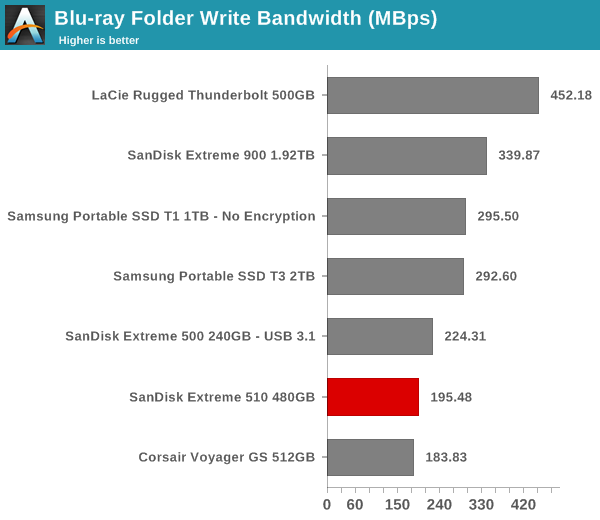
For the second use-case, we take advantage of PC Mark 8's storage bench. The storage workload involves games as well as multimedia editing applications. The command line version allows us to cherry-pick storage traces to run on a target drive. We chose the following traces.
- Adobe Photoshop (Light)
- Adobe Photoshop (Heavy)
- Adobe After Effects
- Adobe Illustrator
Usually, PC Mark 8 reports time to complete the trace, but the detailed log report has the read and write bandwidth figures which we present in our performance graphs. Note that the bandwidth number reported in the results don't involve idle time compression. Results might appear low, but that is part of the workload characteristic. Note that the same testbed is being used for all DAS units. Therefore, comparing the numbers for each trace should be possible across different DAS units.


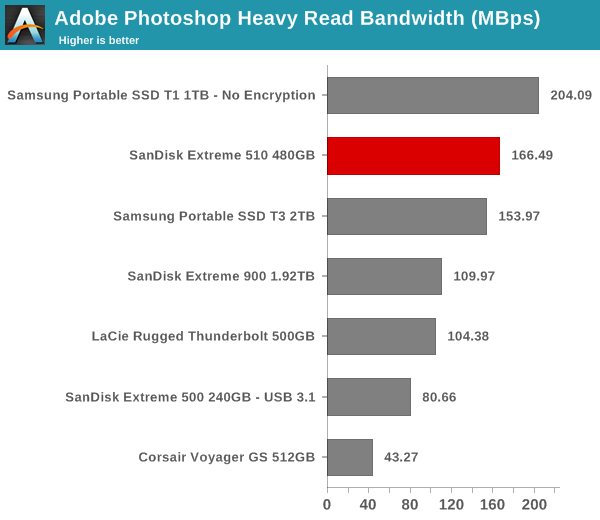

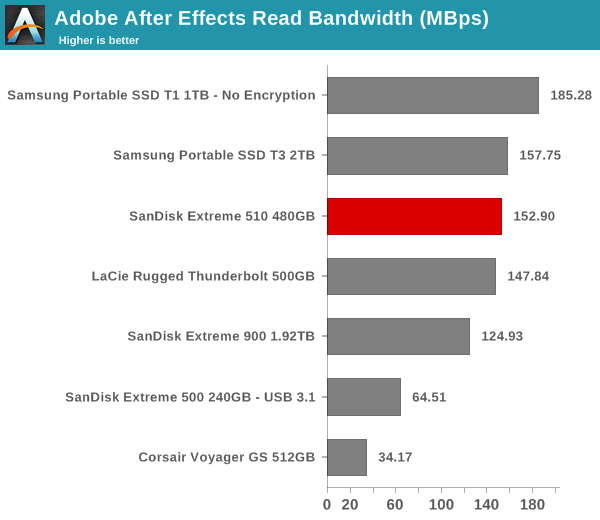



Performance Consistency
Yet another interesting aspect of these types of units is performance consistency. Aspects that may influence this include thermal throttling and firmware caps on access rates to avoid overheating or other similar scenarios. This aspect is an important one, as the last thing that users want to see when copying over, say, 100 GB of data to the flash drive, is the transfer rate going to USB 2.0 speeds. In order to identify whether the drive under test suffers from this problem, we instrumented our robocopy DAS benchmark suite to record the flash drive's read and write transfer rates while the robocopy process took place in the background. For supported drives, we also recorded the internal temperature of the drive during the process. The graphs below show the speeds observed during our real-world DAS suite processing. The first three sets of writes and reads correspond to the photos suite. A small gap (for the transfer of the videos suite from the primary drive to the RAM drive) is followed by three sets for the next data set. Another small RAM-drive transfer gap is followed by three sets for the Blu-ray folder.
An important point to note here is that each of the first three blue and green areas correspond to 15.6 GB of writes and reads respectively. We do find that the temperature starts increasing sharply within the Photos suite itself. After the temperature reaches 75C (happens after more than 120GB of continuous traffic), the controller starts throttling the transfer rates.
SanDisk Extreme 510 480GBCorsair Voyager GS 512GBLaCie Rugged Thunderbolt 500GBSamsung Portable SSD T1 1TB - No EncryptionSamsung Portable SSD T3 2TBSanDisk Extreme 500 240GB - USB 3.1SanDisk Extreme 900 1.92TBWe checked with SanDisk and confirmed that they could also reproduce the problem of extended writes triggering the thermal throttling on the controller. The water resistant coating was cited as the reason. SanDisk stressed that the Extreme 510 is best suited for consumers needing water resistance and durability / ruggedness in their portable flash drive.
Concluding Remarks
Coming to the business end of the review, the Extreme 510 builds upon the proven Extreme 500 design, and adds features required by photographers and other content creators in the field (namely, ruggedness with an IP55 rating).
The thermal throttling under sustained load is a minor point of concern. Given the 120GB of continuous traffic required to trigger the problem, it is likely that consumers are not affected by it in real-world situations. Another issue is that we were unable to confirm working TRIM, even though CrystalDiskInfo states that it is supported.

A typical name-brand 480GB GB SSD can be purchased or as low as $110. Even considering a small USB 3.0 enclosure for $20, the combination is definitely a whole lot cheaper than SanDisk's MSRP of $250 for the Extreme 510. The premium is for the smaller form factor as well as the waterproof nature.The IP55 rating does enable the Extreme 510 to effectively target a particular market segment despite the throttling problem. That said, most consumers (who don't need the IP55 rating) are better off with the Extreme 500 Portable SSD compared to the Extreme 510 discussed above.
Buy SanDisk Extreme 510 Portable SSD 480GB on Amazon.com
More...
-
06-23-16, 08:32 AM #6088
Anandtech: The Intel SSD 540s (480GB) Review
With no in-house controller or NAND suitable for an entry level consumer SSD to compete in today's market, Intel has turned to third-party suppliers for the key components of the new Intel SSD 540s. The SK Hynix 16nm TLC NAND is familiar from the ADATA Premier SP550, but this is our first look at the new Silicon Motion SM2258 controller that brings performance enhancements over the SM2256 and support for upcoming 3D NAND.
More...
-
06-24-16, 07:07 AM #6089
Anandtech: The Meizu PRO 5 Review
The dominance of the smartphone market by Apple and Samsung is being challenged by several Chinese brands that are delivering surprisingly well-featured phones for a fraction of the price. Meizu, one of the smaller Chinese OEMs based on sales volume, trails Huawei, OPPO, and Xiaomi in market share, but is gradually building its brand centered around design and build quality.
The Meizu PRO 5 has been available for some time now, and has even been supplanted by the PRO 6 as the company's flagship device, but Meizu plans to continue selling the PRO 5 alongside the newer version for the foreseeable future at a reduced price. The PRO 5 itself follows the MX5 and is the successor to the MX4 Pro, adopting a new naming convention that further separates it from the midrange MX series. To see how it performs, read on for the full review.
More...
-
06-24-16, 05:31 PM #6090
Anandtech: Microsoft Confirms Surface 3 Production To End In December
File this under “I’m not shocked” but Microsoft has confirmed today that the Surface 3 tablet will cease production by the end of December. The Surface 3 first launched way back in the spring of 2015, and after its review it quickly jumped to the top of the stack in the Windows tablet space. The design, excellent display, and 3:2 aspect ratio still makes it one of the best sub-$500 Windows tablets today.
So the news that it’s going to cease production in six months is not especially exciting – after all it will be going on two years old by that point. The real question is what is going to come next. The Surface 3 is a Cherry Trail Atom design, with a quad-core x7-8700 processor. The successor to Cherry Trail has been axed by Intel though, leaving a big gap in Intel’s lineup. They have confirmed that Apollo Lake will be available for tablet makers, but it’s certainly not a drop-in replacement for Cherry Trail.
Certainly this long after Surface 3 launched, there is plenty of room for improvement. USB-C has become more commonplace, and could easily replace the micro-USB charging which was a major hindrance on the Surface 3, leading to excessive charge times. One of the biggest issues with the Surface 3 was the sub-par storage performance, and on a new model it would be great to see NVMe based storage. The Surface 3 is also 50% thicker and heavier than the iPad Air 2, but it does have a built-in kickstand of course.
We’ve not had any indication from Microsoft on a replacement device, so there’s no indication whether this model will be updated with a refreshed Surface 4, or just cancelled outright. The lack of a new Atom processor might force their hand. While it would be great to see this appear with a new Core M based part, unless Intel revamps that lineup, the pricing of that CPU would likely be the death knell of this smaller Surface device.
If you were looking at one of these, the 128 GB storage option also includes 4 GB of memory, and the price has dropped to $399/$449 without LTE. Stock is limited. It’s still one of the best Windows tablets around, despite its shortcomings.
Buy Microsoft Surface 3 (4GB, 128GB) on Amazon.com
More...
Thread Information
Users Browsing this Thread
There are currently 25 users browsing this thread. (0 members and 25 guests)




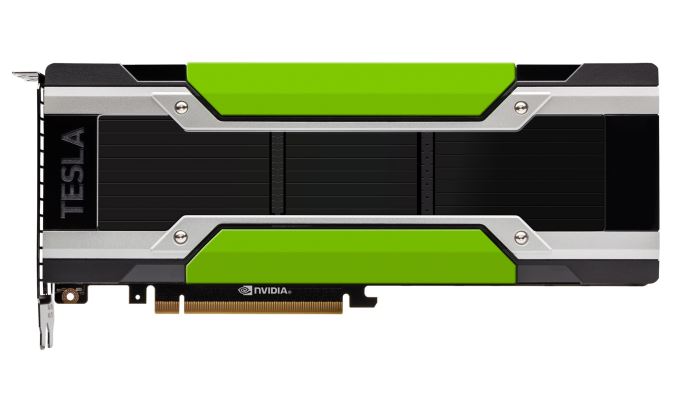
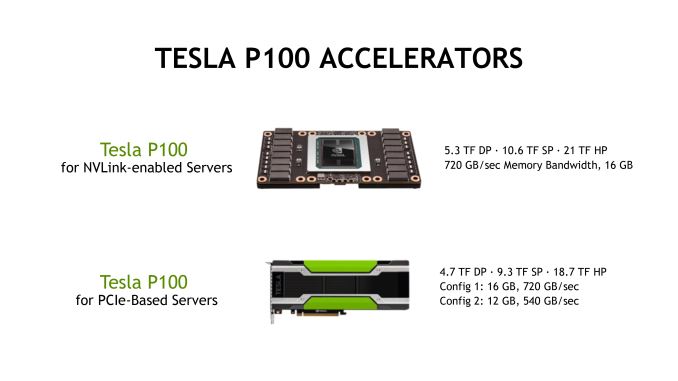

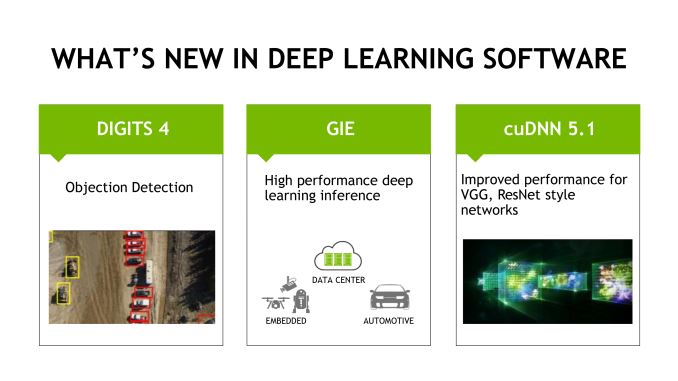



 Quote
Quote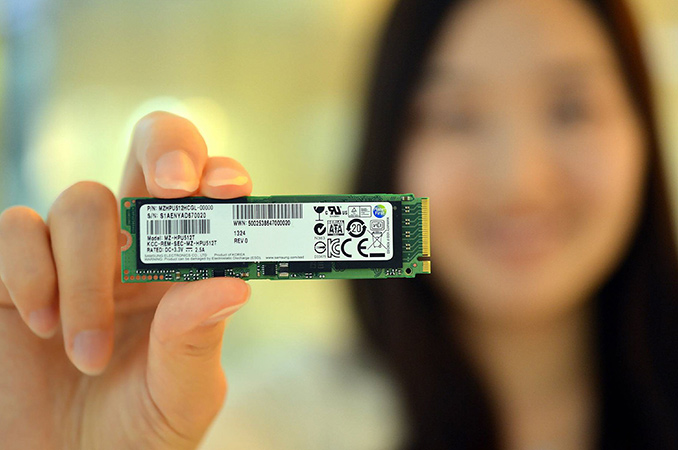











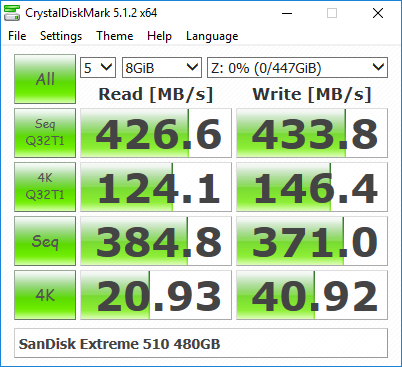
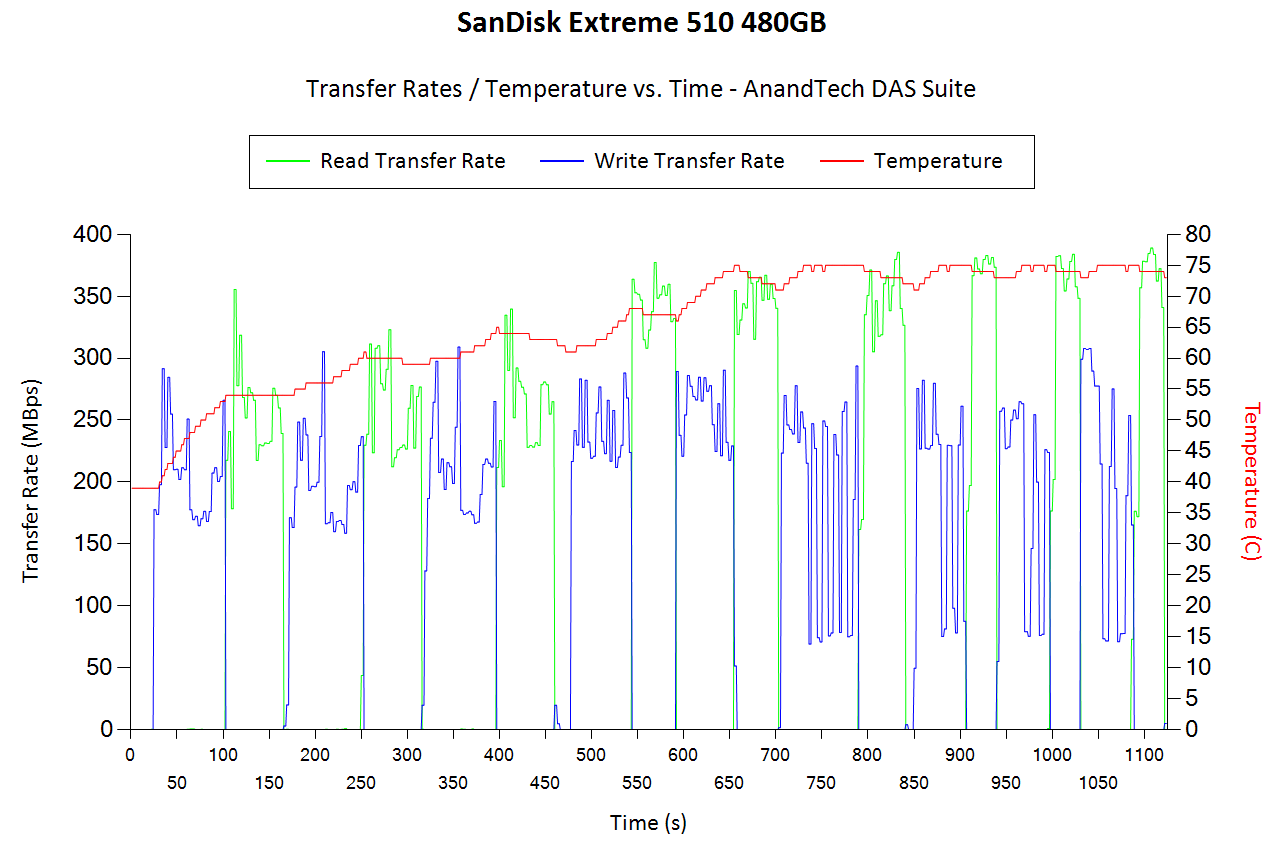
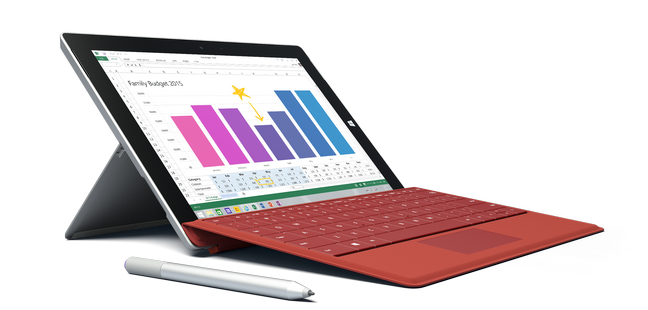
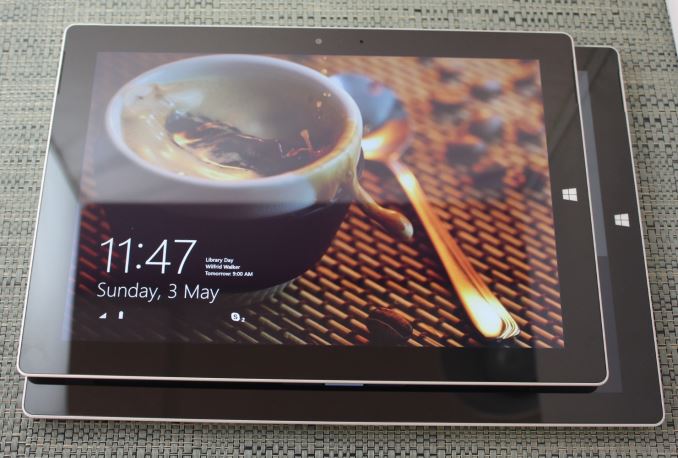
















Bookmarks